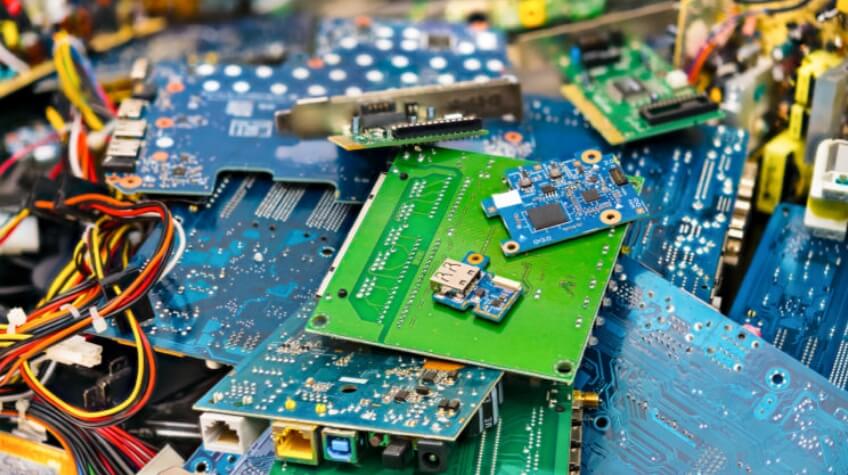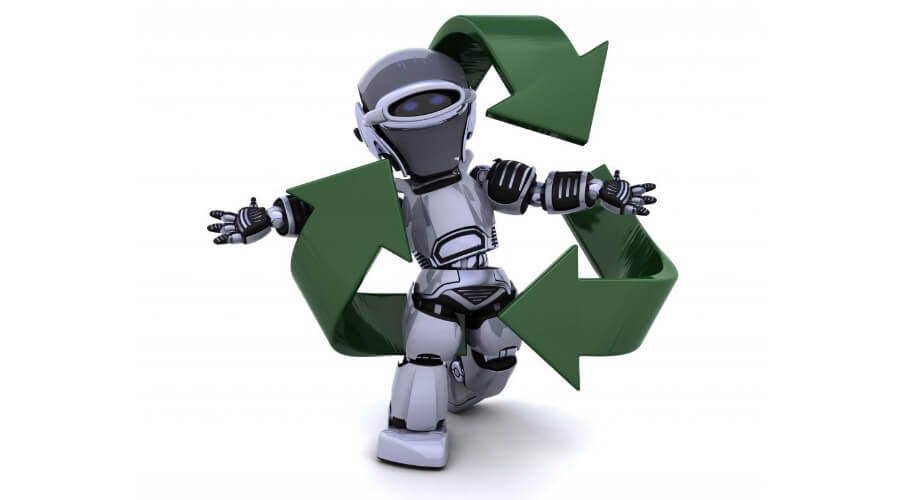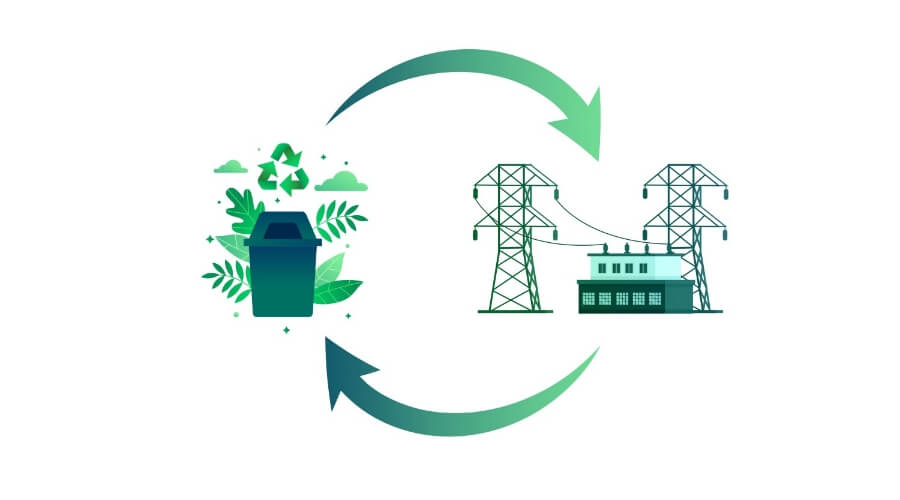
E-waste or electronic waste is quite a popular topic these days. Any abandoned electrical or electronic item that could pose a threat to humans or the environment if dumped there is called e-waste. When in your hands, these items pose no threat to you or the ecosystem. But when they’re thrown away at a landfill, the mercury and lead they contain can seep into the ground and poison the water supply and ecosystem.
These items can be risky to your well-being. They can pose a significant risk to your health. Especially when those contaminants make it into the water supply that you and your family use.
None of today’s gadgets have a guaranteed lifespan. They only last for a certain amount of time, perhaps three to five years. This means that consumers must replace their electronics every three to five years.
And some people don’t even wait for so long. They simply change it the moment a new device is introduced in the market.
In 2019, people produced 48.6 million tonnes of electronic waste worldwide. The intensity of the issue is growing, and it is projected that by 2030, global e-waste production will increase to 67 million tonnes, almost double the output from 2014.
This is huge! And it simply implies that we should now start acting reasonably.
But the question is how?
Read this post if you want to contribute to the reduction of e-waste. In this post, we are sharing 17 innovative ideas to reduce e-waste.
Let’s dive in.
Table of Contents
- How Reducing E-waste Can Protect The Environment
- 17 innovative Ideas for Reducing E-waste
- Robotic Processes
- eWaste Management for Achieving Sustainability
- Arrange your belongings
- Monitoring Systems
- Buy-Back Programs
- Take them Back to the Retailer
- eWaste to Energy Concept
- Recycling Plants
- Give Your Old Electronic Equipment
- Search for Recycling Options Available Nearby
- Store Data on Cloud and Google Drives
- Sell Products not Required any Longer
- Keep Your Gadgets with Utmost Care
- Your Safety Is Your Priority
- Sell Your Old Gadgets
- Spread Awareness
- Why Is Managing E-waste Essential?
How Reducing E-waste Can Protect The Environment
There is a dramatic increase in the amount of electronic waste being generated. It is exacerbated by the illicit export of electronics, especially computers, from wealthier nations to less developed ones, as well as the inappropriate donation of such technology. Since these facilities do not offer sufficient protection for their personnel, only about 25% of electronic waste is recycled at official recycling centers. Environmental contamination and direct contact with recyclable materials can be harmful to human health.
Furthermore, this is not a minor roadblock. As technology improves and our devices become more sophisticated, we are increasingly encouraged to discard older models in favor of the most up-to-date versions. It’s because of this that electronic trash has become a major issue on a global basis.
People should make an effort to learn about the issue of e-waste reduction and commit to working toward a solution. The very first thing we need to do is understand the harmful impact of used electronics piling up in landfills.
Also, we should be aware of the several advantages of reducing electronic waste. The energy required to recycle the elements contained in electronic waste is significantly lower than the energy needed to produce newly designed items, so minimizing the amount of e-waste we generate is beneficial not only for our surroundings but also for preserving resources and decreasing the amount of power needed to produce these items.
Let’s now take a look at the most innovative ways that we can use to reduce e-waste. Here we go…
17 innovative Ideas for Reducing E-waste
1. Robotic Processes
At number 1, we have robotic processes. The technology known as artificial intelligence, or AI, can be of assistance to us in tackling improper garbage disposal. Also, it can help capitalize on opportunities that are being missed.

As a result, an AI system can help us recycle in a way that is both effective and affordable. Also, it will prevent extremely harmful mistakes and bring us closer to living a waste-free lifestyle.
2. eWaste Management for Achieving Sustainability
It is difficult to recover the metals contained in e-waste. However, metal is in high demand for use in batteries for electronic devices such as laptops, smartphones, and electric vehicles.
The amount of energy required to smelt metals from recycled ore is anywhere from two to 10 times lower than the amount of energy required to smelt metals from virgin ore. In addition, the extraction of gold using obsolete technology releases 80% less carbon dioxide per unit of gold.
As a result, increasing the amount of scrap materials used in the production of electronic goods is a great option. Doing so may considerably contribute to the accomplishment of climate sustainability goals.
3. Arrange your belongings
Another important and very handy solution to reduce e-waste is to keep your belongings organized.
But the question is which belongings?
Of course, here we are discussing the ways to reduce e-waste. So, you must keep your electronic belongings, from your DVDs to wires and other electrical products, organized. Otherwise, you may never realize what you already have.
The last thing that you ought to do is go out and purchase something that you think you need. More often than not, people do this, and like this, they keep stashing duplicates of each item.
4. Monitoring Systems
IoT devices make it easy for enterprises that manage waste to keep track of the amount of garbage collected in containers. On the basis of this information, they may create strategies for the disposal of electrical trash. Doing so will guarantee that automobiles for the collection of electronic waste follow a path that is power-efficient and cost-effective.
This will bring the dumping of electronic waste into a specialized digital world. Also, it will make the disposal of electronic waste simpler and more effective.
The demand for sophisticated monitoring systems is expected to increase significantly up throughout this decade. Many waste management companies have already started employing IoT devices. In comparison, others are planning to install modern systems to manage waste.
5. Buy-Back Programs
The cumbersome and time-consuming nature of handling e-waste has contributed to the accumulation of garbage. However, as our mineral richness continues to deplete, it is important that electronic waste be recycled through innovative e-waste treatment.
Buy-Back programs are a novel approach that will compensate customers monetarily whenever they return undesired digital products to the program. This “e-waste” may consist of any and all forms of transportable electronic equipment, including but not limited to mobile phones, computers, tablets, and so on.
6. Buy Lesser Products
There was a time when our ancestors used to buy only what they required. They even taught us the same. However, with time, we tend to forget all the important lessons of life. But the time has come when we need to go to our roots and follow the “less is more” strategy.
Undoubtedly, the most prevalent cause of electronic waste is when consumers buy products that are surplus to their needs. So, if we start managing our buying habits, we can contribute a lot towards the reduction of e-waste.
All you have to do is to avoid purchasing brand-new electronic gadgets that can neither be reused nor discarded. E-waste management can be accomplished in an environmentally responsible manner by selecting electronic products that are either recyclable or long-lasting.
7. Take them Back to the Retailer
The consumer and the retailer entered into a legally binding contract through the implementation of a buy-back program. This contract implies that the retailer has consented to purchase back the product that was originally sold to the consumer.
A select few retail establishments provide this service. Check to see if the shop will buy your used camera, computer, and other electronics before you purchase a new gadget.
8. eWaste to Energy Concept
There are numerous ways electricity is produced, such as hydro, renewable energy, and so on. Similarly, authorities and concerned departments must come up with ways to reuse the e-waste to generate electricity.

E-waste can be used as an electrode. It helps to create power and recovers metals so that they can be reused. The Microbial Fuel Cell, also known as the MFC, is a technology that does not pollute the environment. It does this by generating power even in the absence of fossil fuels. This, in turn, lowers the cost of processing organic e-waste.
9. Recycling Plants
The utilization of technologies such as shredders, sorters, and scanners, amongst others, has made the process of recycling more effective. It is advantageous for both investors and customers.
The recycling industry, which carries billions worldwide, is still grappling with the idea of recycling. However, there is no doubt that this field is one with a bright future.
10. Give Your Old Electronic Equipment
Applying the age-old formula “sharing is caring” can also help you reduce e-waste significantly. Yes, there are many people around you who may want to buy expensive gadgets. If you feel that your phone or computer is in good working condition, give it away instead of discarding it.
Yes, if there is something that you no longer require, consider donating it. Doing so will bring happiness to the life of another person. Donations qualify for significant tax deductions as well. Since the money given is frequently compared to the value of the item if it were sold.
Pro Tip: Make sure to format your phone or laptop before you donate or give to someone.
11. Search for Recycling Options Available Nearby
Irrespective of where you reside, you should investigate the local recycling options that are available to you.
Once you have found a recycling option in your area, discuss them with your loved ones and neighbors. Encourage your loved ones and friends to put their electronics in the recycling unit instead of throwing them away.
There are many websites that provide data on the various possibilities for recycling gadgets in your area. You can take the help of those websites as well. Know that spreading awareness and encouraging people to do the right thing is a great way to protect the environment from the harmful effects of e-waste.
12. Store Data on Cloud and Google Drives
We are in an era of advancements. Every now and then there is a, new technology introduced to make people’s lives easier. One such technology is a cloud server. Now you no longer need to buy hard discs and other equipment to store your data. Today, you can store your data on the cloud or Google drive. Storing your data not only helps in having organized data but also significantly helps in the reduction of e-waste.

With the cloud, you don’t need to invest in a sizable server or other devices with a heavy workload to store data. Cloud data platforms and google drives are great for storing and syncing your data over several devices. Moreover, they do not require you to connect to a server at any time.
13. Sell Products not Required any Longer
If you no longer have a use for your devices, you should sell them as soon as possible. There is a dizzying array of businesses that are happy to pay cash for your used fitness bands, wearables, video gaming consoles, PCs, cameras, and other electronic devices. Such businesses propose to offer services in the form of “cash in return for goods.”
14. Keep Your Gadgets with Utmost Care
Making some relatively insignificant adjustments will help you keep what you’ve got working for a longer period of time. All you have to do is to follow some small steps and have your device working for a long time. Some of the things that you can do on a regular basis include the following:
- Keep your computer clean and safe on a regular basis.
- Avoid turning it on for extended periods of time to lengthen the life of its battery.
- Get it serviced on a regular basis. A device is no less than your vehicle that needs regular maintenance and upkeep.
The longevity of an electronic product can be significantly impacted by how regularly it is serviced and maintained. Hence, follow these steps and have your device working for an extended period. It will help you save money and time.
15. Your Safety Is Your Priority
It is crucial to make your safety a priority and discard old cell phones and computers at recyclers.
Not only will it help you contribute to the reduction of e-waste, but it will also ensure the safety of your personal data.
Ask how?
The fact that all of your personal data is still stored on your electronic devices after you have deleted it provides still another justification for why you should not dispose of them. Your electronic device can be wiped clean at recycling locations before being recycled, preventing identity thieves from gaining access to any information it may contain.
16. Sell Your Old Gadgets
Since there is no quick way to get rid of electronic garbage. Also, the fact remains that we will eventually have to get rid of it anyhow.

Why not make some money out of it now?
Don’t allow any accumulation to occur. Because of the rapid advancement of technology, electronic items are getting older every day. Therefore, it is highly recommended to sell off any electronic gadget that is not being utilized. It will help you avoid clutter and loss in the future. Moreover, you will be able to make some money out of your old gadget.
There are many people who prefer to buy refurbished devices, especially when it comes to premium devices, such as Apple iPhones. It is because high-end devices are expensive. Buying a fresh piece is not everybody’s cup of tea. That’s why they look for refurbished devices.
The best thing is that you don’t need to search for a buyer. There are numerous online platforms, specifically meant for reselling refurbished devices. All you have to do is to register yourself there and upload pictures of your device at a price your desire. Buyers will contact you directly; you can negotiate with them and sell your gadget without any hassle.
17. Spread Awareness
Unquestionably, technology has made our lives easier, but at what cost? Ask yourself!
And ask your loved ones as well.
Each one of us needs to understand that it’s high time now. If we do not act now, we won’t be able to handle the problem in the future.
We all know that the vast majority of electronic gadgets include potentially hazardous components. Therefore, it is essential to dispose of them in an appropriate manner.
And the same thing should be taught to people around you. Educate not only yourself but also your children and the people you associate with. The presence of these substances ought to raise our awareness of the risks posed by e-waste.
Let’s take a look at one of the most prevailing concerns associated with e-waste…
Why Is Managing E-waste Essential?
As said earlier, not being disposed of appropriately, electronic waste can pose health risks. Electronic equipment typically contains hazardous chemicals and metals that are considered to be heavy.
Chromium, cadmium, mercury, and lead are all examples of substances that have the potential to seep into the soil. All of these can pollute the environment and water bodies. According to a study, the global annual production of e-waste totals approximately 60 million tonnes. By reclaiming this item, we can conserve room in the landfill. For all of these reasons, a rising number of state laws now prohibit the disposal of electronic waste in landfills.
Copper, aluminum, plastic, glass, and precious metals like gold, silver, and platinum are just some of the valuable elements that go into the production of electronic goods. Other common components include glass and plastic.
It is essential to recycle these products so that the materials involved are retrievable. The majority of electrical equipment is recyclable in almost their whole. Putting these goods in a landfill would be terrible for land conservation. Because valuable resources may be reclaimed via the recycling process, it will lead to a reduction in the need for new raw materials. Important natural resources will be preserved as a result of this action. According to the Environmental Protection Agency (EPA), there is 800 times the amount of gold that can be extracted from one metric tonne of circuit boards as there is from one metric tonne of ore.
When a new product, often known as “virgin material,” is manufactured or processed, emissions of greenhouse gases are produced. However, using recycled material will help minimize these emissions. A greater supply of material that has been recycled will correspondingly reduce demand for material that is not recycled.
Wrapping it up…
So, these are the top 17 ways you can reduce e-waste. Employing these ways in your day-to-day life can significantly impact the environment.
It is imperative that the concept of recycling outdated models rather than throwing them away be drilled into people’s heads. It is because users will continue to purchase new products.
If we dispose of our electronics in a landfill, we will be putting the environment in jeopardy. On the other side, recycling has quite a few positive effects that it can have on the natural world.
The other option is to turn these kinds of gadgets over to a recycling company. Make sure the company you choose is trustworthy and has experience recycling electronic equipment in a way that is kind to the environment.
So, be kind to the environment by adopting sustainable practices in your day-to-day life! Doing so can make the world a better place for all, including the coming generation!






